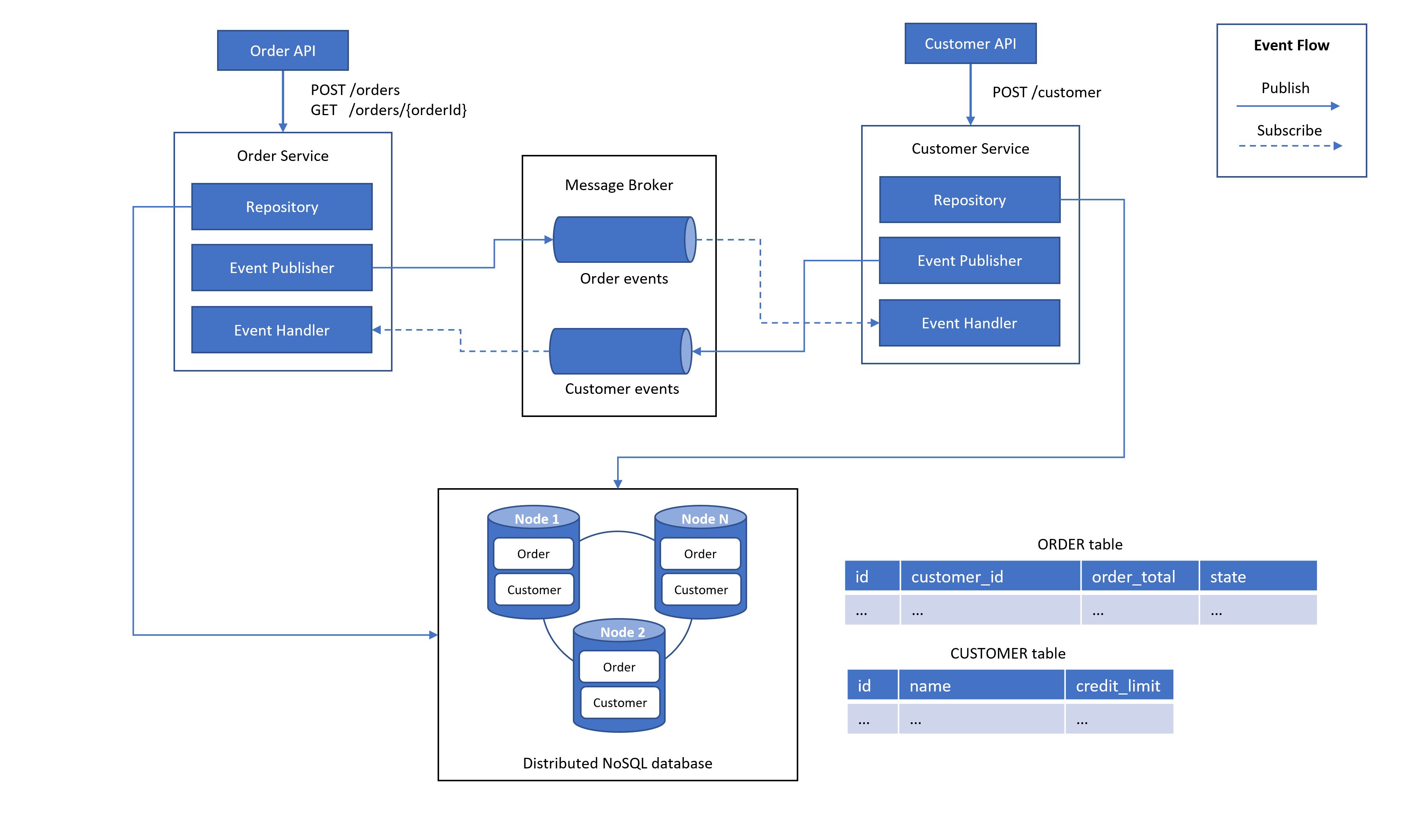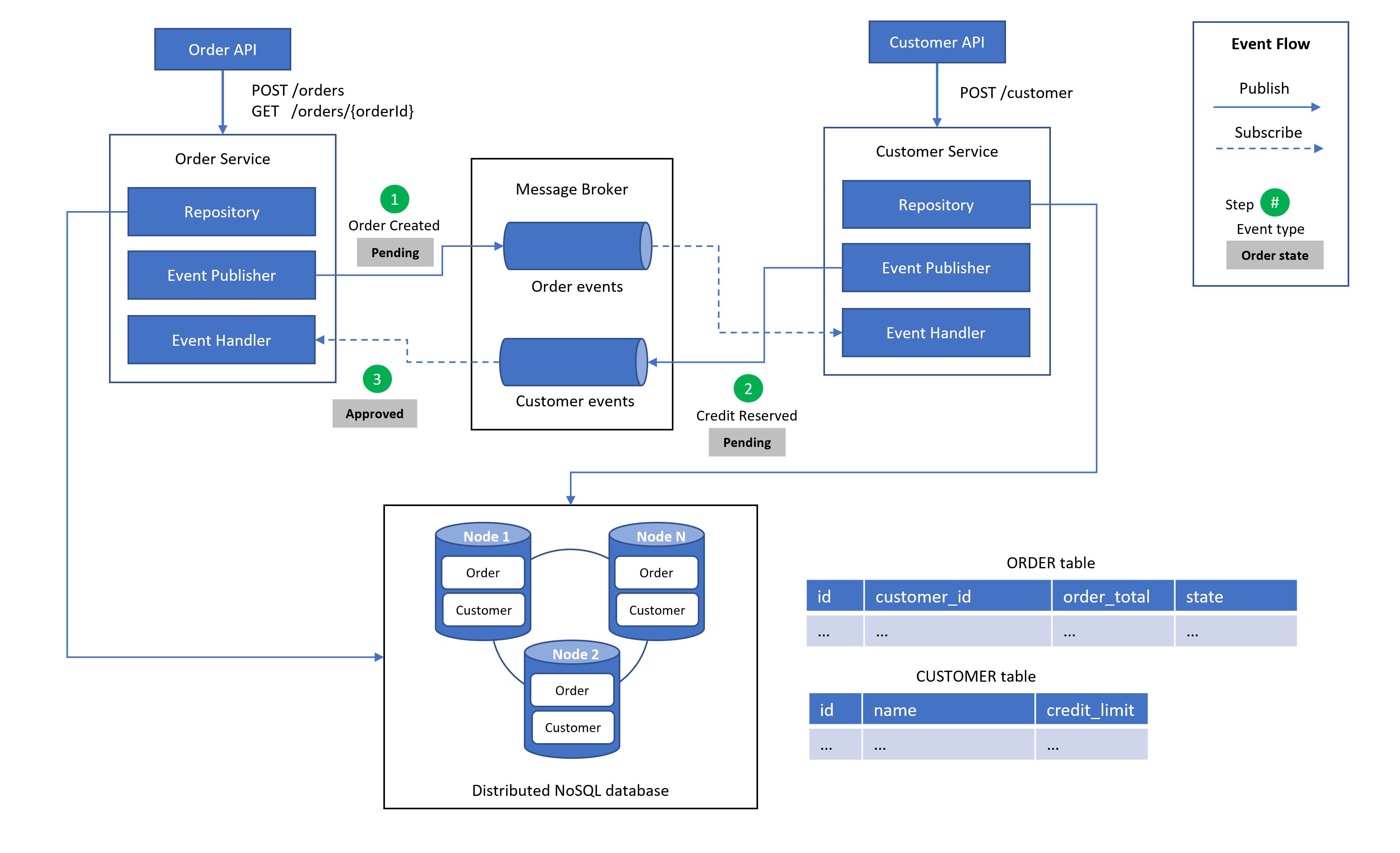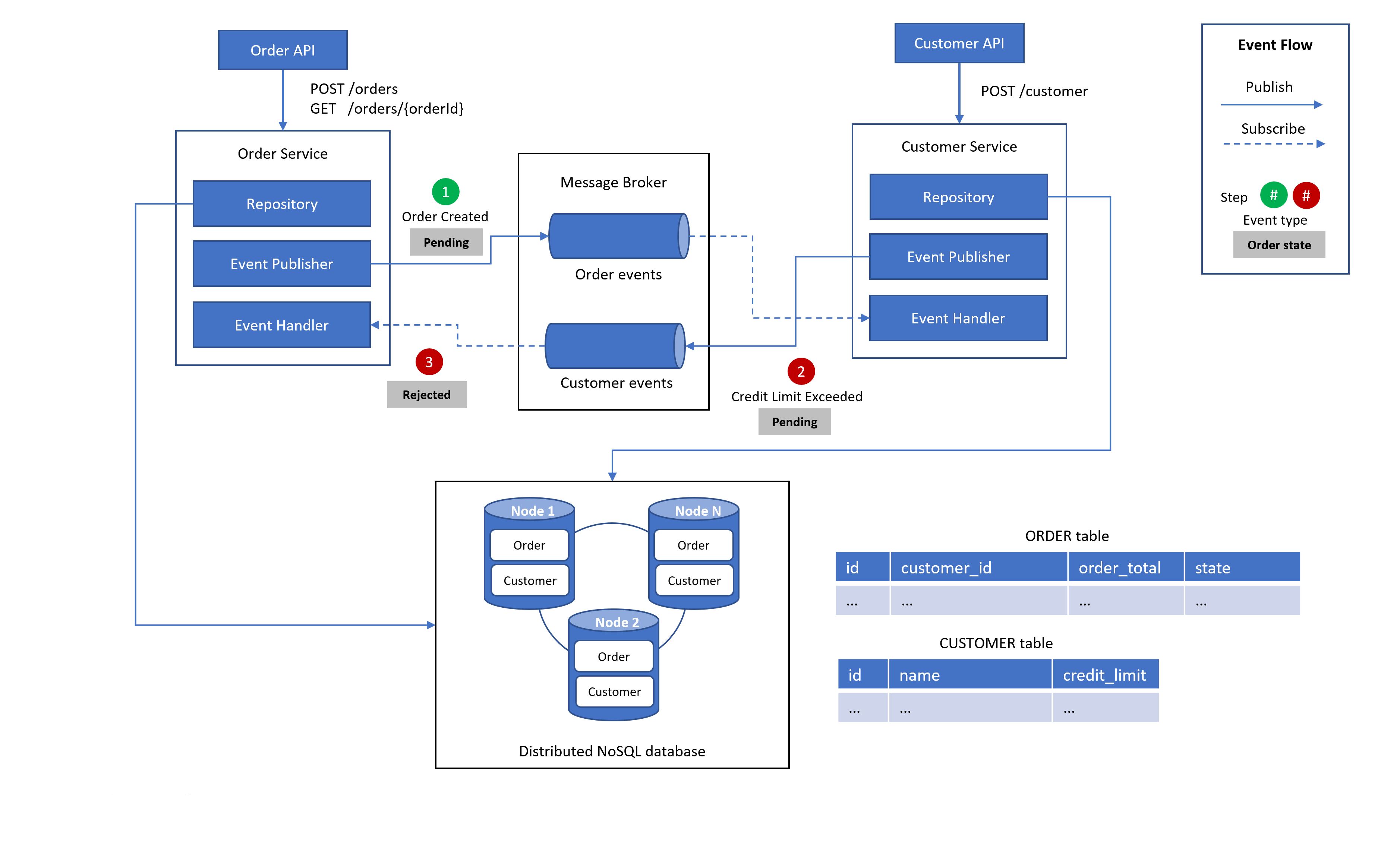Choreography-based Saga Pattern: Data consistency in Microservices
This is a transaction management sample solution that demonstrates how to maintain data consistency across services in a microservices architecture by using Saga pattern.
Services are implemented through choreography-based sagas, which means that all participants are loosely coupled as they don't have direct knowledge of each other. Participants 'simply' subscribe to each other’s events and respond accordingly.
Architecture Overview
Architecture Components
-
The
Order APIis a Java/Spring Boot RESTful service with routes to create a new order and get details of an existing order. -
The
Order Serviceis a saga participant written in Java/Spring Boot that receives requests from the Order API. It starts local transactions with a distributed database (Datastax Cassandra) to create a new order or query info about an existing order. After the creation of these local transactions, it publishes order events to the message broker (Apache Kafka). Additionally, there is an event handler that subscribes to aCustomer Topicto receive customer events. -
The
Customer APIis a Java/Spring Boot RESTful service with a route to create a new customer. -
The
Customer Serviceis a saga participant written in Java/Spring Boot that receives requests from the Customer API. It starts local transactions with a distributed database (Datastax Cassandra) to create a new customer. After the creation of these local transactions, it publishes customer events to the message broker (Apache Kafka). Additionally, there is an event handler that subscribes to anOrder Topicto receive order events.
Architecture Notes
-
It is not mandatory to use a highly scalable distributed NoSQL database (like Datastax Cassandra) for local transactions for each saga participant, you can use a SQL or NoSQL database of your choice.
-
It is not mandatory to use Apache Kafka as a message broker, you can use another one of your choice (like RabbitMQ, Azure Event Hub, etc).
Architecture: A Successful Scenario
-
The
Order Servicecreates anOrderin a PENDING state and publishes anOrderCreatedevent. -
The
Customer Servicereceives theOrderCreatedevent and attempts to reserve credit for that order. It publishes aCreditReservedevent and the order state is still PENDING. -
The
Order Servicereceives theCreditReceivedevent and changes the order state to APPROVED.
Architecture: A Failure Scenario
-
The
Order Servicecreates anOrderin a PENDING state and publishes anOrderCreatedevent. -
The
Customer Servicereceives theOrderCreatedevent and attempts to reserve credit for that order. It publishes aCreditLimitExceededevent and the order state is still PENDING. -
The
Order Servicereceives theCreditLimitExceededevent and changes the order state to REJECTED.
Getting Started: Prerequisites
- Java 8 (OpenJDK or Oracle JDK)
- Docker for Windows or Linux
Building and Running: Order services
Running the Docker container
Go to src/order and build the application:
$ docker build -t order-api .
$ docker run -p 8080:8080 -t order-api
Next you can use the Order API through Swagger UI on http://localhost:8080/swagger-ui.html.
Running without Docker container
If you want to run services without Docker container, run this script on src/order:
./gradlew assemble
The script above will download Gradle automatically and will build the API. Now you can run the API with this command:
./gradlew build && java -jar order-api/build/libs/order-api-*.jar
Next you can use the Order API through Swagger UI on http://localhost:8080/swagger-ui.html.


